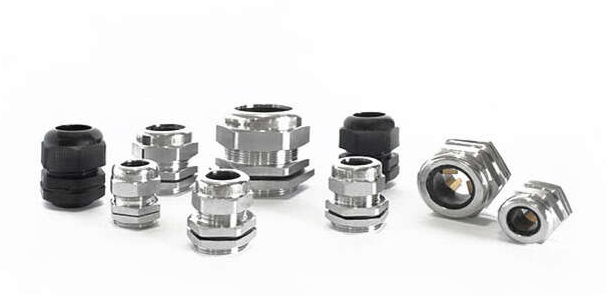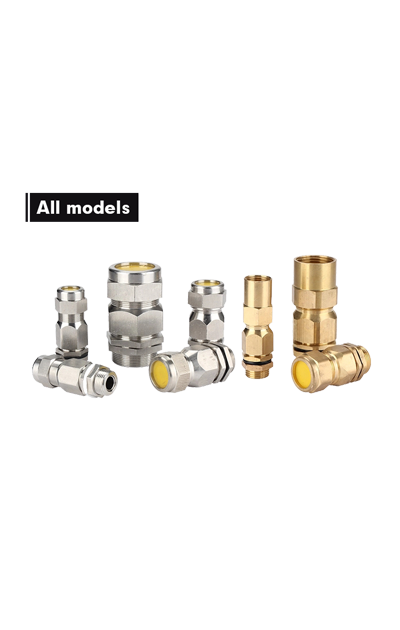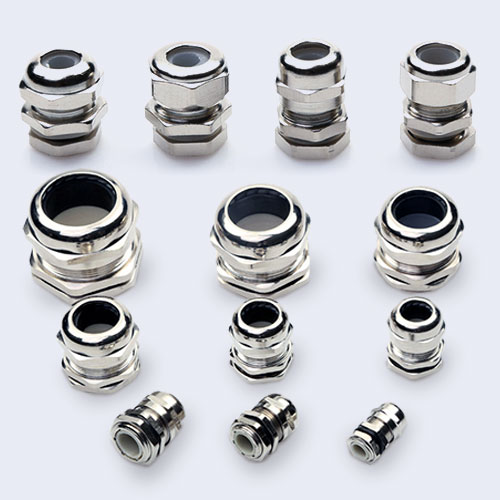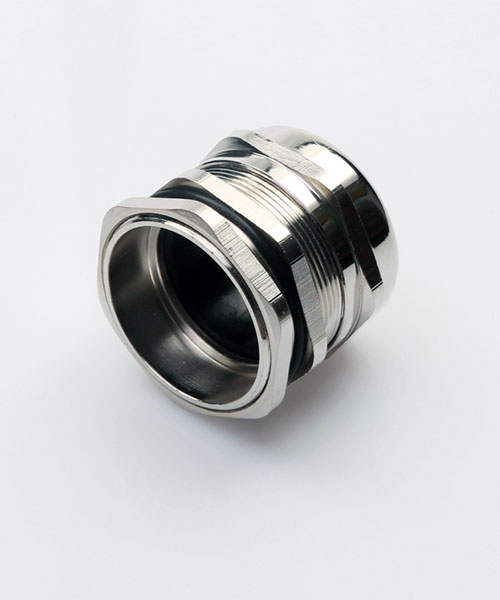Established in 2009, Yueqing Bolun Electric Co., Ltd. is an industrial and trade enterprise specializing in the research & development of Cable gland, Explosion-proof armored connector, Marine stuffing box, Hose connector and other cable accessories.
How do you know which Cable Glands are suitable for your application?
Jan 28, 2022
The purpose of strain-relief cable glands
Cable Glands play many important roles in Cable management. Designed to connect and fix Cable ends and their connected equipment, Cable Glands provide grounding, grounding, insulation, bonding and stress relief. They can also be used to seal cables that run through sealing plate partitions.
Cable glands are usually located in dangerous or harsh environments that require electrical sparks containing flames, or repels external contaminants such as dust, dirt and liquids. Among other things, their job is to prevent cables from twisting or pulling to ensure safe connections and sustained performance.
So how do you know which Cable Glands are suitable for your application?
How to select Cable Glands?
There is a world of choice, and unfortunately there is no one-size-fits-all option. But it does mean that you can customize the cable sealing sleeve to your parameters. To do this, you first need to consider a number of environmental and application factors.
The role of environment
It doesn't matter if you work in aerospace, industrial, Marine, power and utilities, telecommunications, or any other critical industry. It is important to determine the core application environment of Cable Glands.
Questions to ask yourself:
Do you use it indoors or outdoors?
Will it be located in a safe industrial area or in a dangerous or explosive environment?
What is the temperature? Is it constant?
Is the surrounding area wet or dusty?
Are there any gases or corrosive substances nearby?
Your answers will help determine cable joint specifications and whether special protective coatings or coatings are required.

Purpose of installing Cable Glands
Different cables require different types of Cable Glands. For example, armored cables (also known as steel wire armored (SWA)) have different requirements than non-armored cables. Armoured or SWA cables are used for external walls or underground.
Guide to cable joint dimensions
To determine the correct size for armoured and unarmoured Cable Glands, you need to consider:
Cable diameter
The construction scale
Cable material.
Type of cable joint material
The properties of cable joint materials vary by application, environment, and cable type.
Metal Cable glands
Metal cable connectors are used in a range of applications, including the chemical industry, technology and areas where special mechanical and chemical stability is required. The advantages are durability over time even under wet conditions and rigid stability.
Plastic Cable glands
Plastic cable joints have a wide cable range due to their claw shape and seal design, making them ideal for a wide range of applications. The advantages are resistance to salt water, grease and weak acids.
Brass Cable glands
Brass Cable Glands are widely used in medical equipment, control equipment, measuring equipment and machinery,
Brass Cable Glands have corrosion resistance, electrical conductivity and thermal conductivity.
Nylon Cable glands
Nylon Cable Glands are mainly used for telecommunications, instrumentation, data lines, power, and are very suitable for flexible cables. Furthermore, nylon Cable Glands are high stress relieved and can withstand the highest IP level (IP68). Provides color coded cable colors.
High-Quality Bolun Cable Gland, Hose Connector And Other Cable Accessories supplier
Yueqing Bolun Electric Co., Ltd. was established in 2009. It is an industrial and trade enterprise specializing in the research & development of Cable gland, Explosion-proof armored connector, Marine stuffing box, Hose connector and other cable accessories.
Looking for professional cable gland and other cable accessories supplier? Quote the latest price for Bolun Electric cable accessories right now.
Curious which Cable Glands are most suitable for your application?
Contact Us:
Yueqing Bolun Electric Co., Ltd.
Email:
Telephone:
+86 181 0679 6660
Address:
Zhiguang Industrial Zone, Liushi city, Yueqing City, Zhejiang Province
The Professional Cable Accessories Manufacturer
Why Choose Bolun Electric?
Focus on the Resarch & Development of Cable Accessories
With more than ten years of R & D experience, we provide you with higher professional cable accessories knowledge and high-quality product guarantee.
Broad Application Range of Bolun Cable Accessories
Ours product with CE, IP68, ROHS, CNAS, SGS certifications and have been sold well overseas for more than ten years and have been widely used in many fields such as new energy vehicles, rail transit, aerospace equipment, ship equipment, robots and so on.
Higher Cable Accessories Quality and Best Service for you
Qualified Cable gland and other Cable Accessories. Buy them online from Bolun Electric Co., Ltd. We will shall wholeheartedly provide product information, application knowledge and good service for you.
Pick up higher quality and more
professional cable accessories.
Advanced Cable gland and other Cable Accessories Technology News
Latest Cable Accessories News & Technology
News and knowledge about Cable gland, Explosion-proof armored connector, Marine stuffing box,
Hose connector and other cable accessories.
What is cable gland used for?
Cable glands can be made of metallic or non-metallic materials (or a combination of the two) that al
New type anti-electromagnetic EMC waterp...
Bolun has developed an innovative and particularly reliable cable gland for high-voltage vehicle ele

Installation steps flow,product performa...
It is mainly used to clamp the cable protection cable when the cable enters and exits the distributi
Get a Quote
Choose Higher Quality and Safer
Accessories for Cables
Describe your needs and quantities in detail.

Get a Quote from Bolun Electric
Get a quote on the latest price of cable gland and other cable accessories. We will reply within 48 hours.


